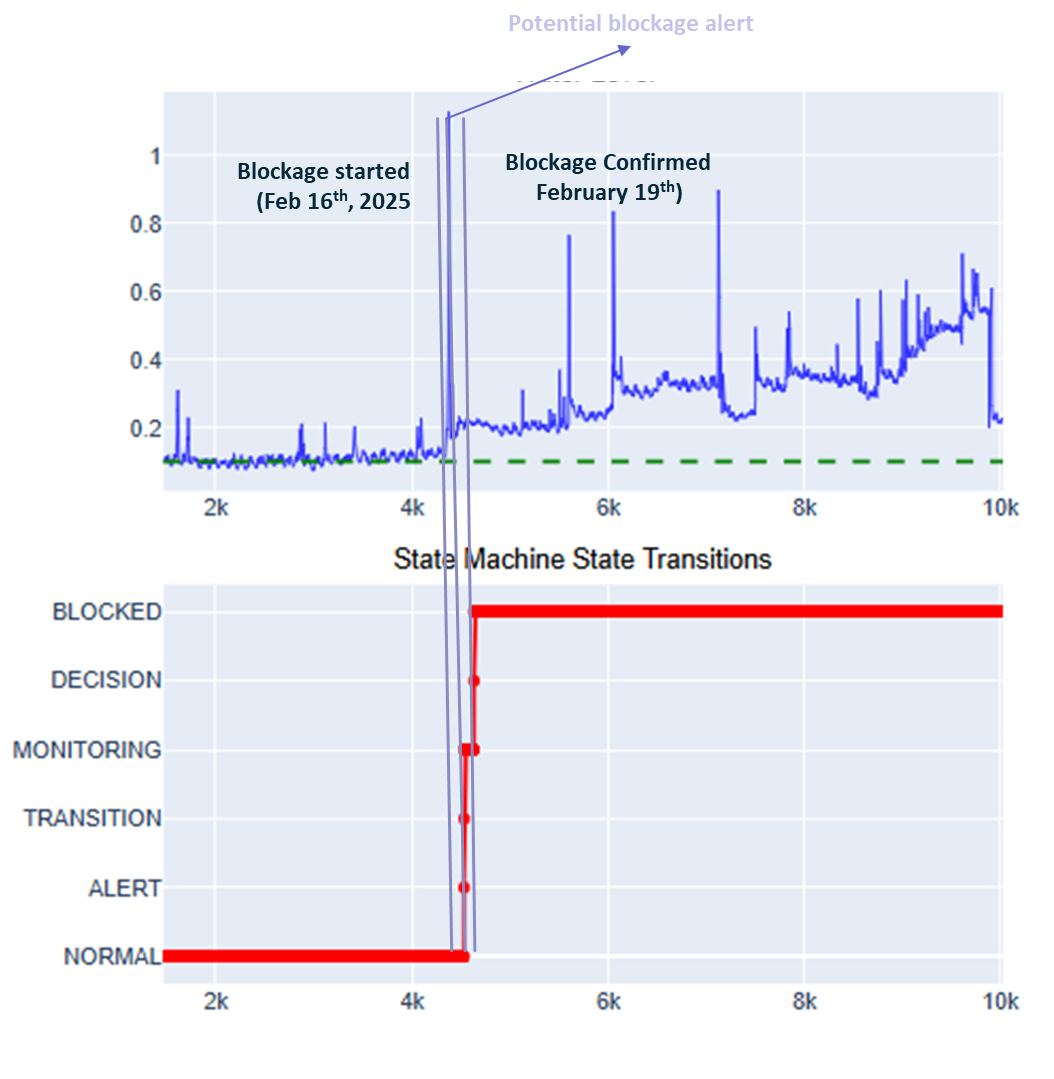In cities across the country, sewer blockages are a silent threat—building up unnoticed until they cause overflows, service disruptions, or costly emergency repairs. Traditional methods rely heavily on routine inspections or citizen complaints, often catching problems too late. But what if we could see the warning signs before the crisis?
At Trinnex, we’ve developed an AI-powered, predictive sewer blockage detection approach that’s already proving its value in the field. Our work with a sewer utility offers a compelling case study in how proactive insights can transform utility operations. By shifting from reactive to predictive maintenance, utilities can reduce environmental impact, improve service reliability, and optimize field crew deployment—all without overhauling their existing infrastructure. Let’s dive into the approach and the how!
Why the Trinnex Approach to Sewer Blockage Detection Works
We didn’t set out to build just another alert system. Our goal was to create a solution that delivers real-world value to utility teams—especially those on the front lines.
Built for Action, Not Just Alerts
Our model doesn’t just flag anomalies—it provides early, actionable insights that help field crews prioritize inspections and prevent sewer overflows. In this case study, the model flagged a potential Sewer blockage that the utility had not known about.
Designed with Utilities, for Utilities
We worked closely with municipal partners to ensure the system fits into their workflows.
Adaptable and Scalable
Whether a city has a handful of sensors or a full SCADA system, our approach adapts to the available data. It’s designed to scale across different infrastructure setups without requiring complex modeling or calibrations.
Case Study
In February 2025, a sewer blockage began forming in the utility’s sewer system. Here’s how our system responded.
- Sewer blockage onset: February 16, 7:00 PM
- Model alert (potential sewer blockage): February 18, 5:00 AM

That’s a 34-hour detection window—a critical head start for field crews. The sewer blockage persisted for nearly two months, and the model continued to monitor and update its status throughout. In this case, since it was a retroactive analysis, the detection by the model could not be used to confirm the presence of the sewer blockage in the field. To ensure success, the model detections will be coupled with notifications sent to relevant personnel to create an immediate feedback loop and timely action.
Shifting from Reactive to Proactive Sewer Maintenance: The Bigger Picture
Sewer blockage prediction isn’t just about technology—it’s about empowering utilities to do more with less. By shifting from reactive to proactive maintenance, cities can:
- Reduce sewer overflow volumes and environmental impact
- Improve service reliability
- Optimize field crew deployment
- Build public trust through better performance
Looking Ahead
We’re continuing to refine our model based on field data and feedback. Our vision is clear: to make proactive sewer management accessible, intuitive, and impactful for every utility.
If your city is ready to get ahead of sewer blockages, please reach out to us. we’d love to talk!
.png)

